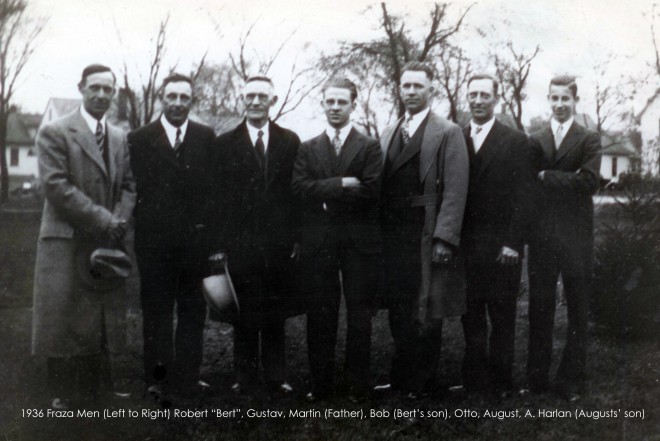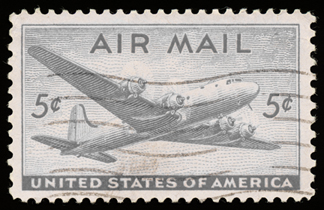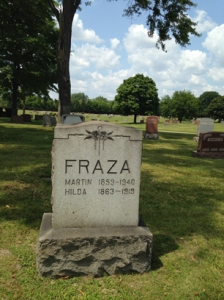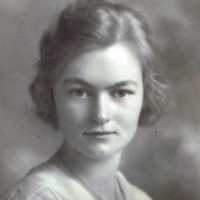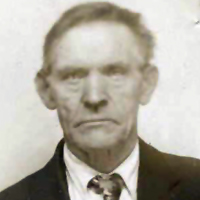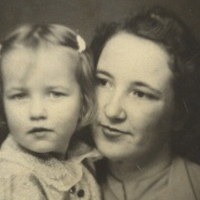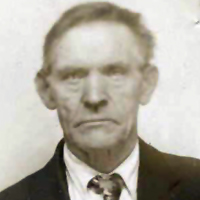What’s in a name? A lot of confusion if you’re me…
I was born with the surname Fraser, a solid and storied Scottish clan name. I somehow got to skip the time-honored tradition of a school project to trace your roots and I spent many happy summer afternoons at various Highland Game events and haunting the aisles of tartan shops when possible. I was Scots! The belief was never challenged. Then, somewhere in my middle teens, I began paying attention. How could I be of German heritage but have a Scottish name? I had not understood the act of “anglicizing” names during the immigration process and the washing away of culture that many immigrants felt was needed when they arrived to the United States- at least not in a personal way; it was academic facts only and a phenomenon left in the history book at school. (Never mind, too, it’s still happening today.) When my “true” surname was revealed to me my conscience was bothered a bit but my identity as “A Scot!” was firm… I didn’t want to give it up. And I didn’t, and I won’t. What’s in a name, after all?
For more than two decades, I’ve let the sleeping dog lay in it’s shady spot. But it’s awake and in the full sun now.
As I’ve researched my patriarchal lineage, this is what I’ve learned…
Frese– the name the family “got on the boat” with and at least one child kept.
Freese– the name that Castle Garden electronic records keep this family under- that was a pain to figure out.
Fraza– the anglicized and/or phonetic spelling of the surname.
Fraser– the chosen, similar-ish, but *completely* different culture name the younger siblings adopted.
And this does not touch on the census, marriage, divorce, phone book and other official documentation misspellings of the name! Variations I’ve found include Freze, Fresa, FROZE (that one fried me), and more. Martin Albert Fraza’s Naturalization application has two spellings and a struggle visible on it. In the typed area, it says “Freze”, *after* something was XXXX’d out. In this document signature, it says Frese quite clearly. On Martin’s signed photo, though, it looks like he could not decide what to write… I swear he wrote an “a” over an “e” and it’s not clear if he made an “s” or a “z”…
I doubt any of this meant they didn’t know who they were. It was just part of their “American Story.” But it does seem to express some frustration and, in later years, some shame. Yes, they knew who they were and where they came from. It breaks my heart a little bit that they found reasons to change that even a little bit.
Do I dishonor these people by keeping and valuing my variant and the alternate history it offers me? I cling so dearly to my name that I’ve tattooed it’s representation on my body… Does that mean I don’t honor what I now know of the Frese/Fraza/Fraser clan- that I’ve ignored the vast adjustments and changes a couple undertook to, ultimately, bring me into this world? Was Martin saddened by his children’s choices to leave their heritage behind?
A family member once announced to me their intention to change their name back to the original Fraza. I got piping mad. I waxed poetic about the idea they were about to dishonor their personal history and challenges that their forbearers had faced and were going to separate themselves from the ones who love them. I regret that moment now. Their idea feels more honorable now, that they somehow knew the truth of it better than I did, even before the evolution of the name was clear to any of us. This family member was setting out to honor their own truth and I stomped on it. I am sorry.
In the end… I am a Fraser. A fake Celt and a proud descendant of the Frese family of West Prussia. I will wear my tartan proudly, proclaim my American Story of change for the sake of finding a home in a new place, and- perhaps- add another tattoo in the years to come. Indeed, what IS in a name?
